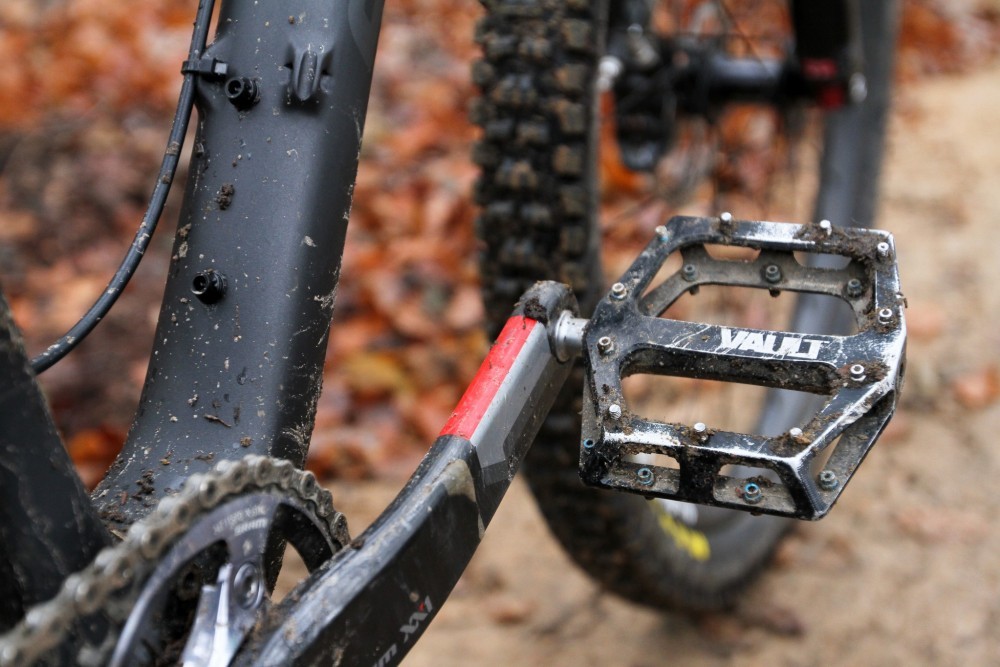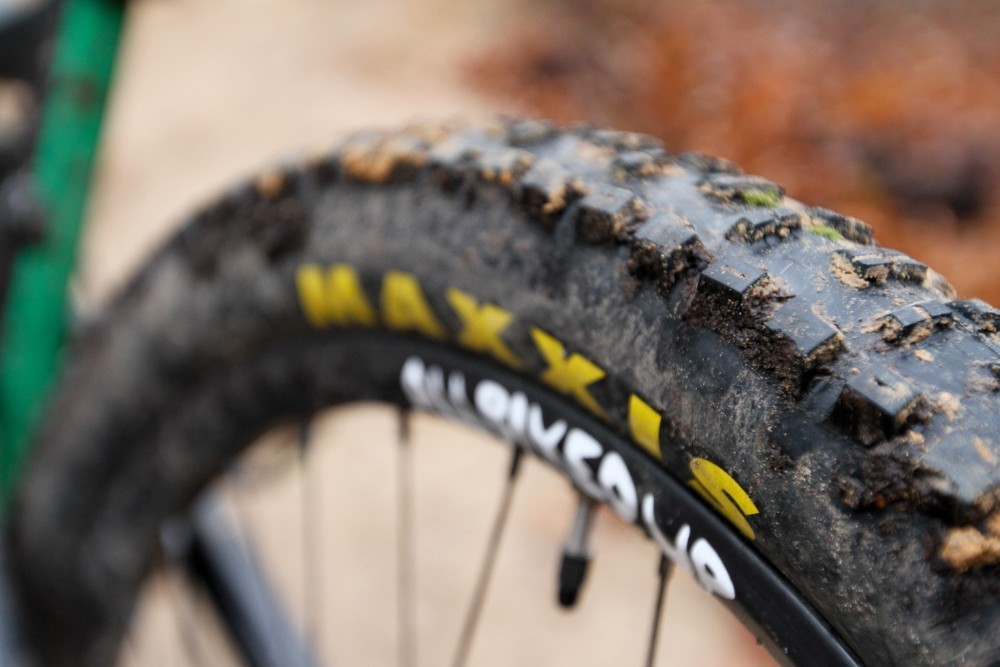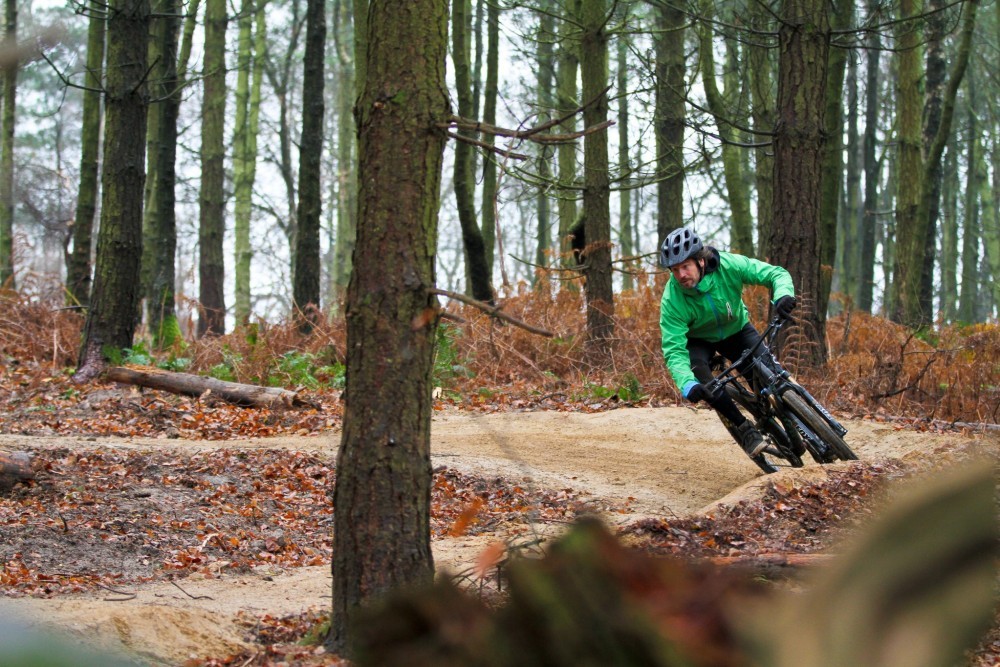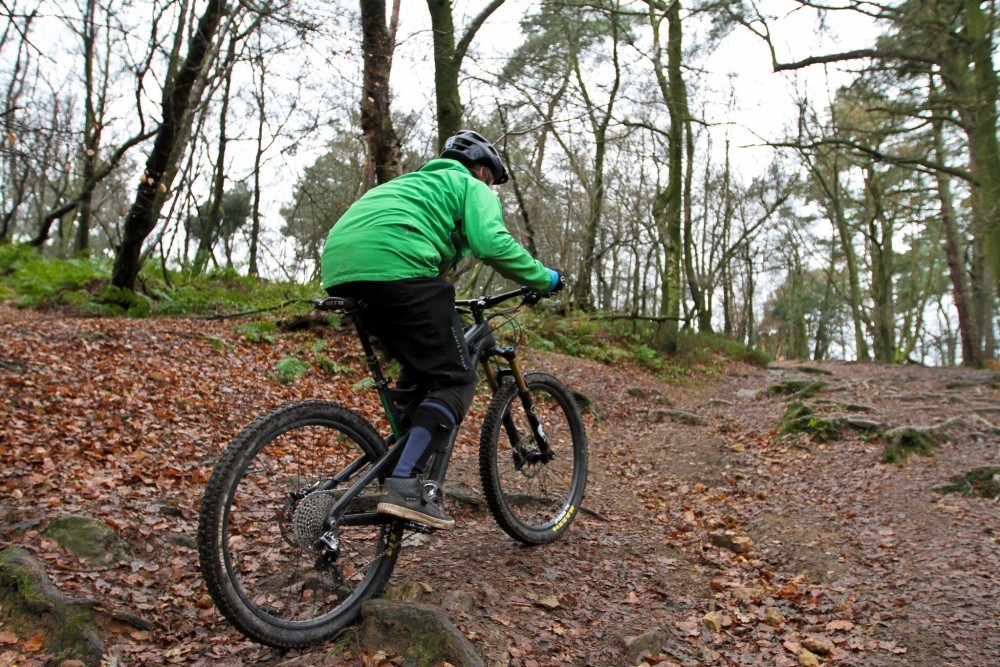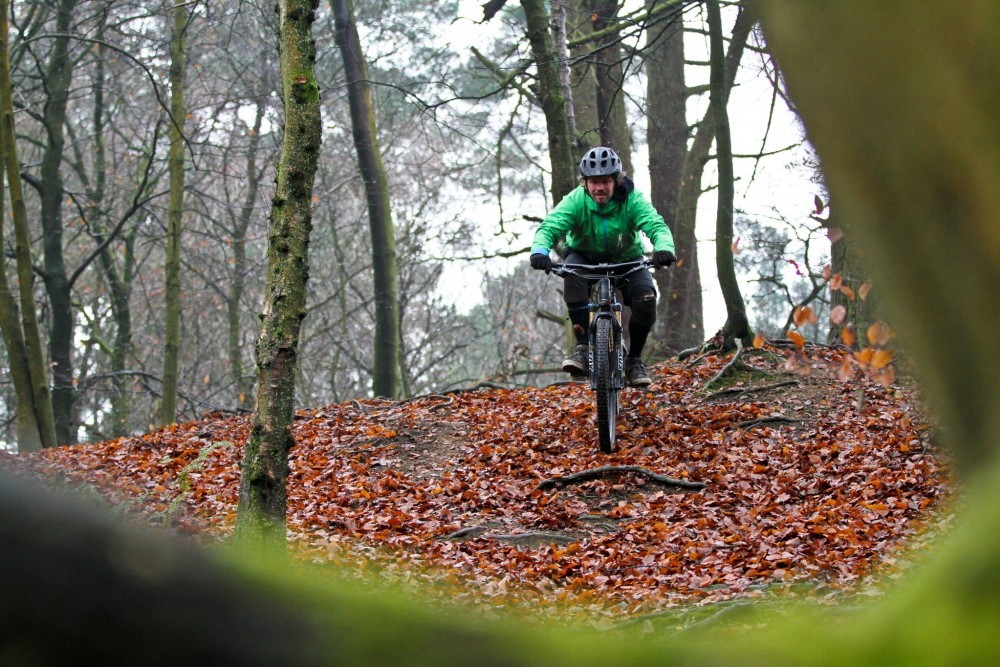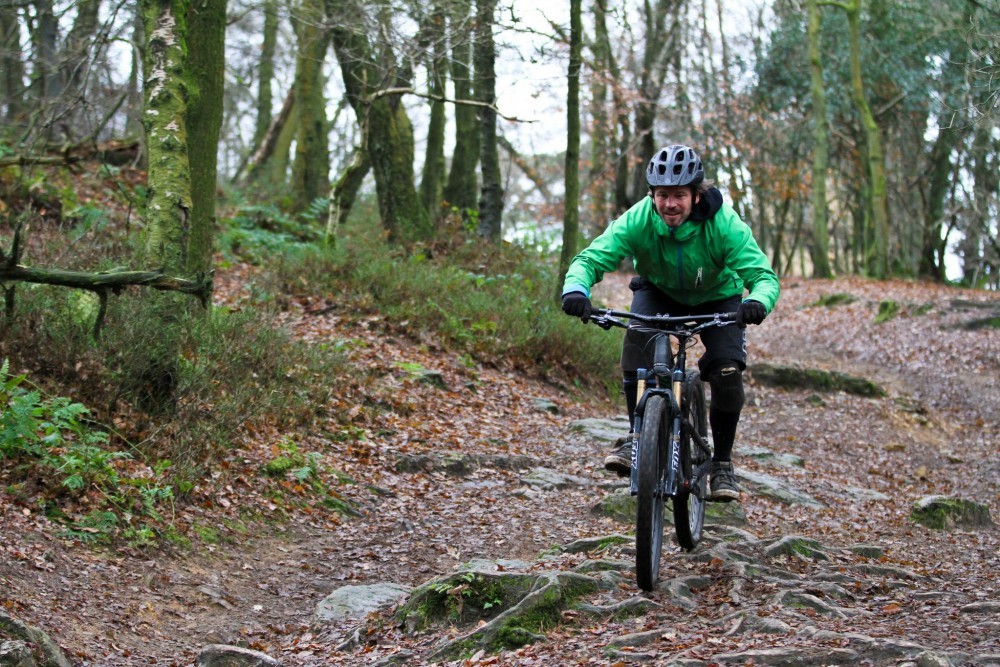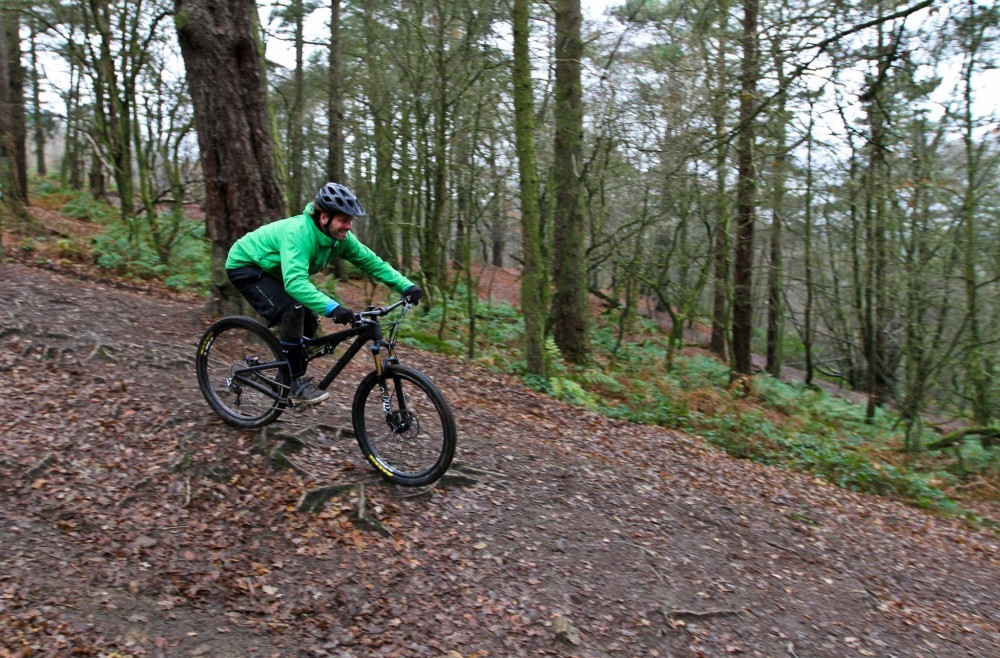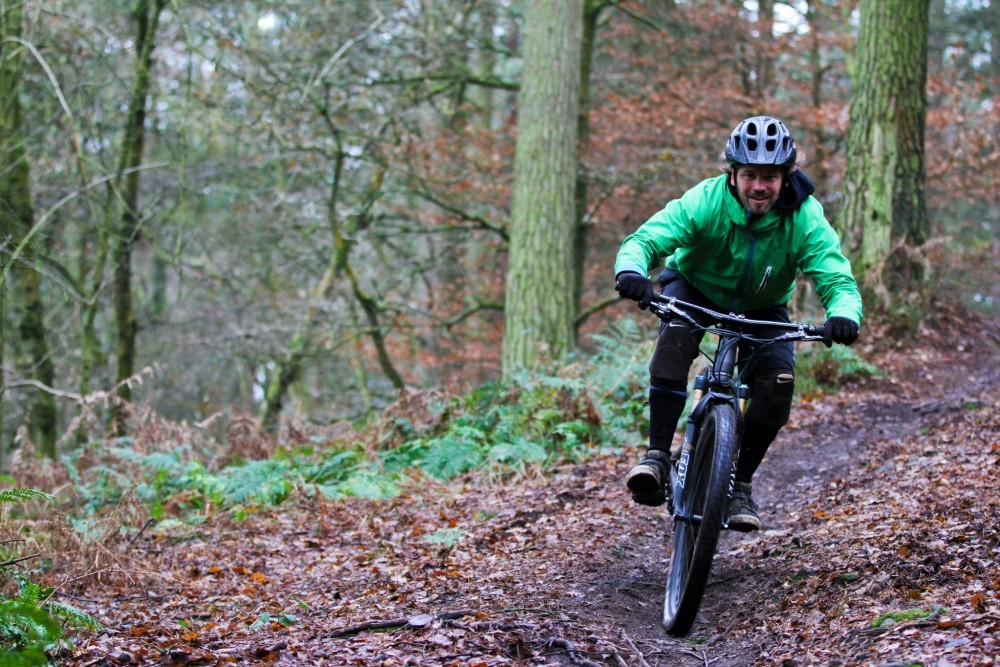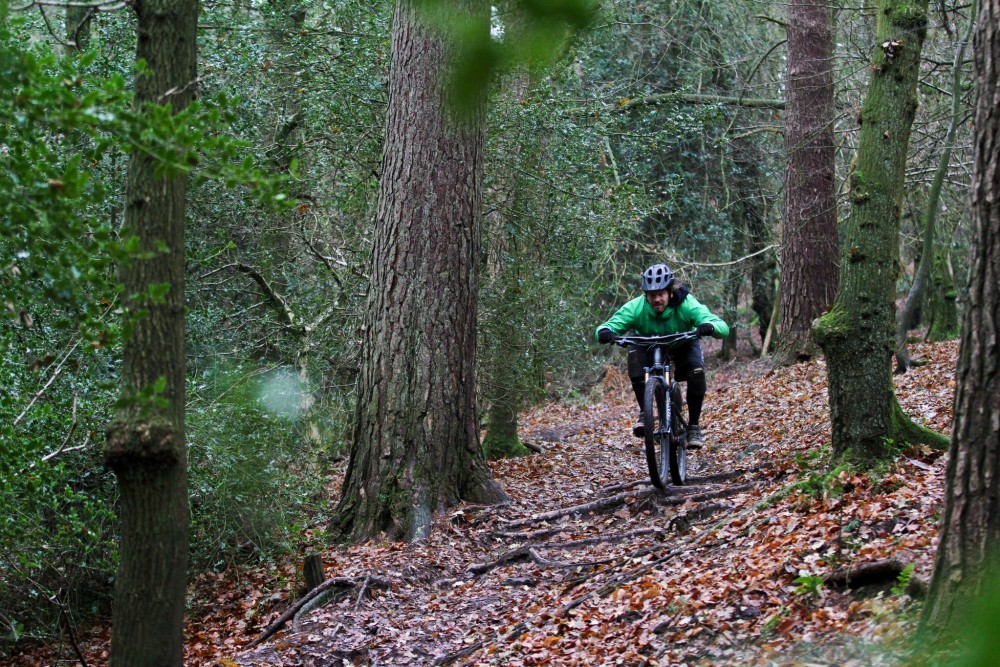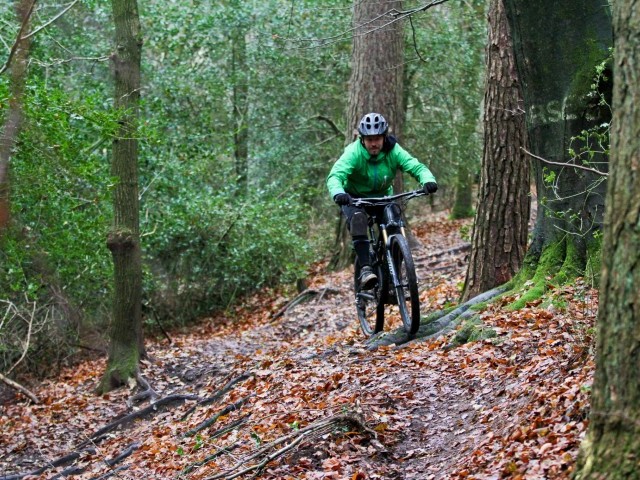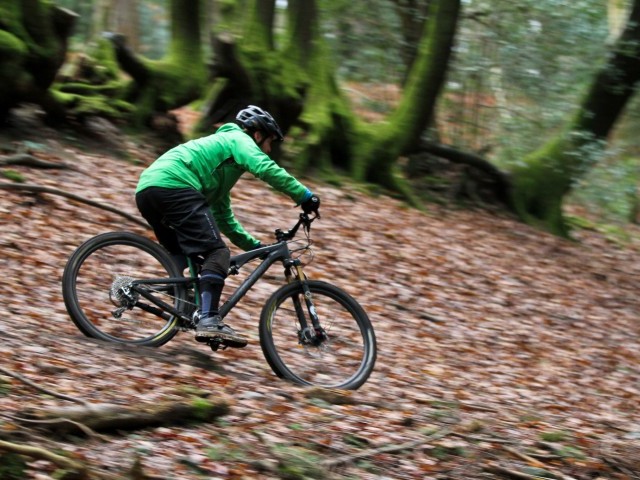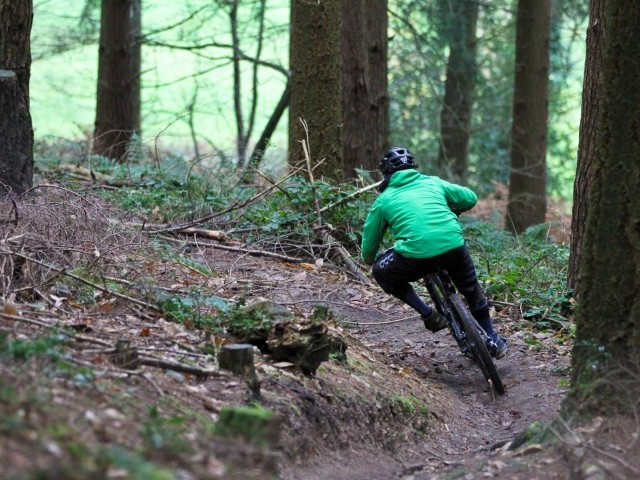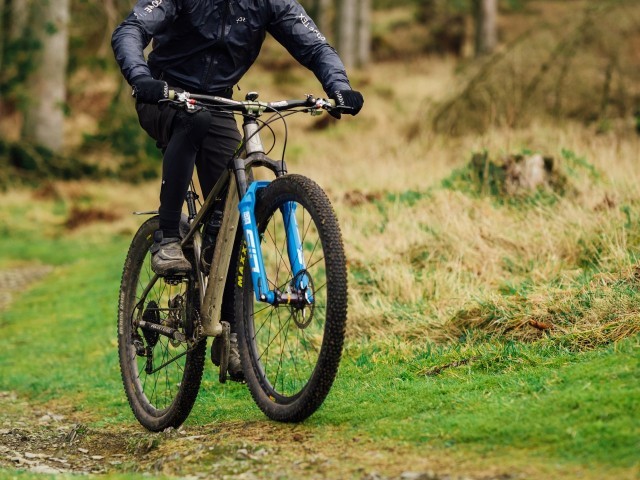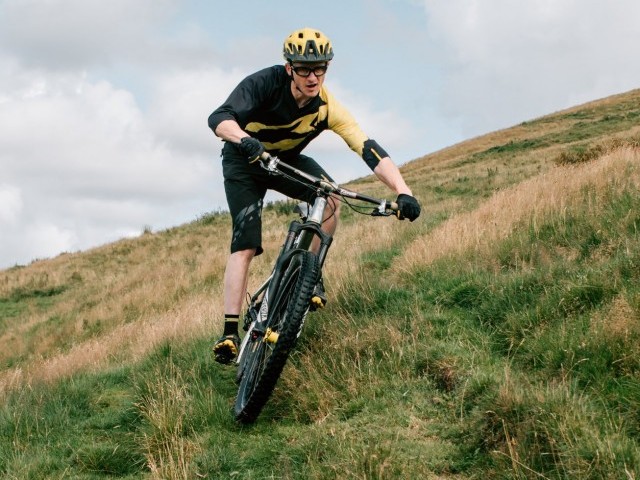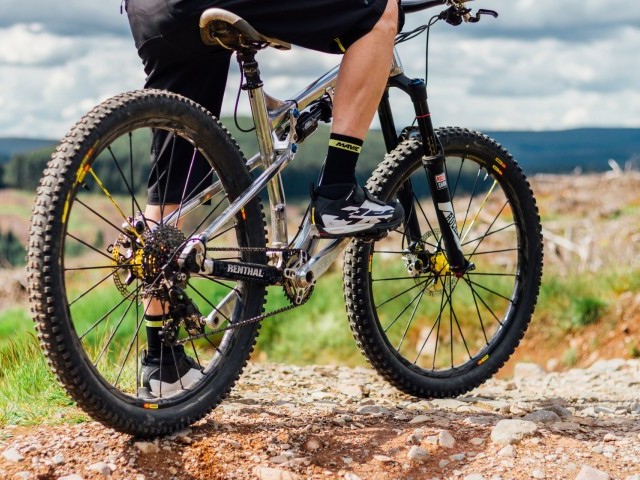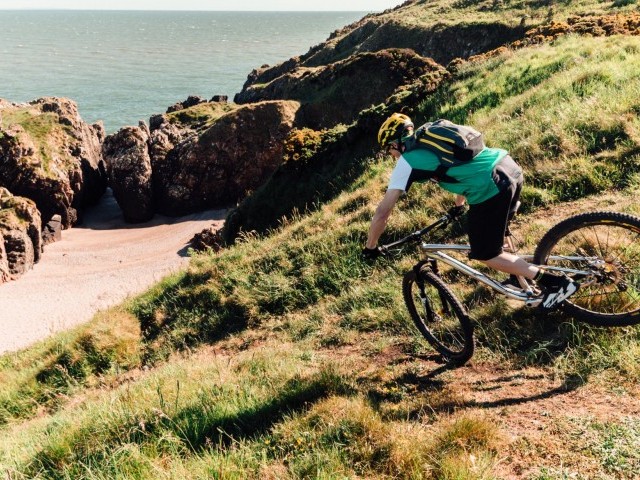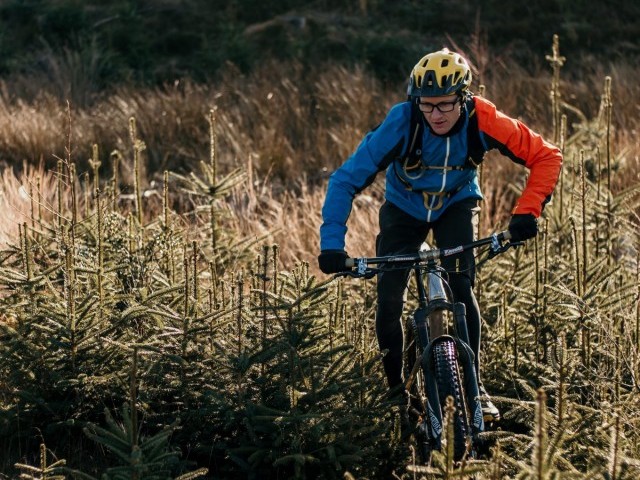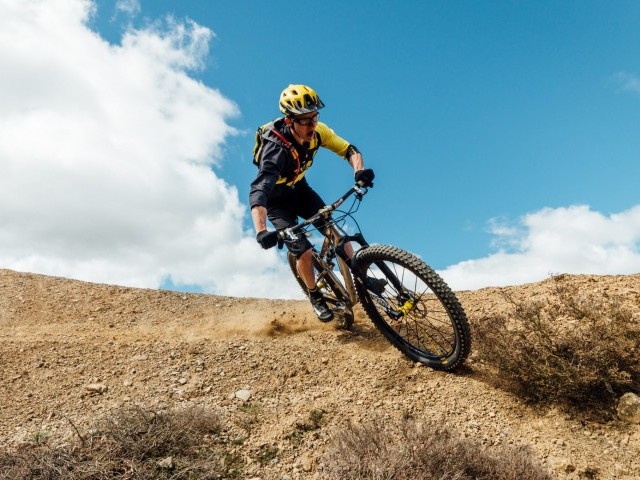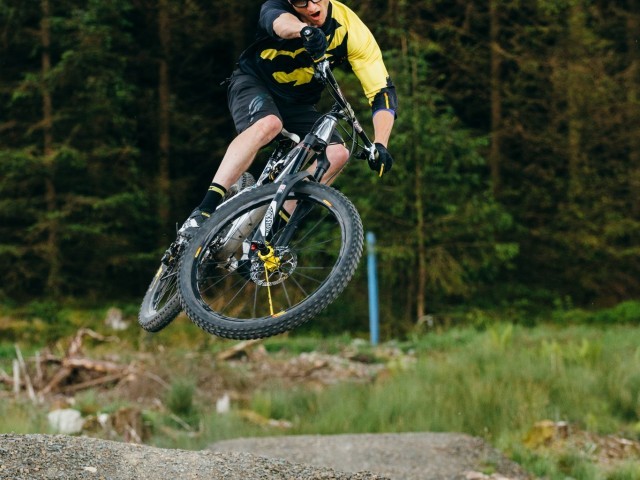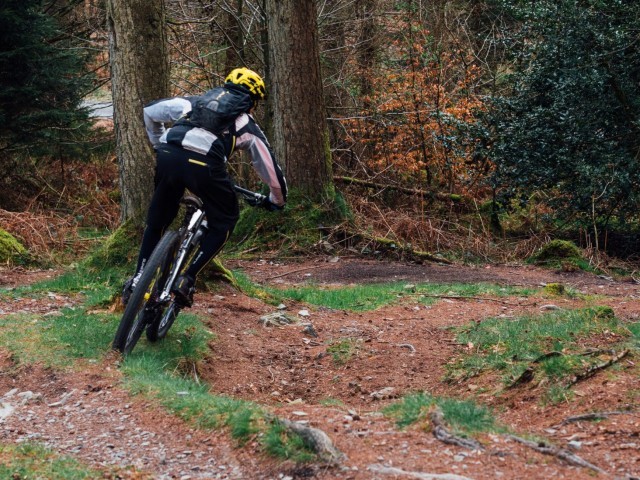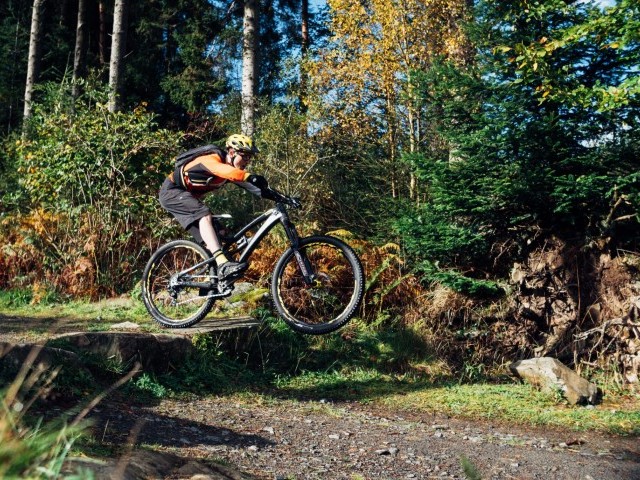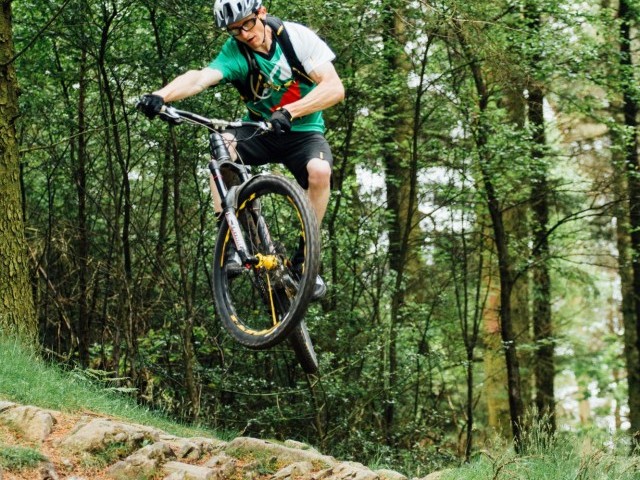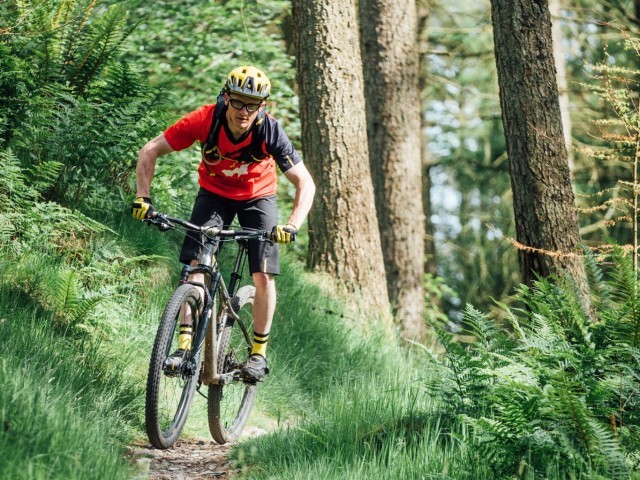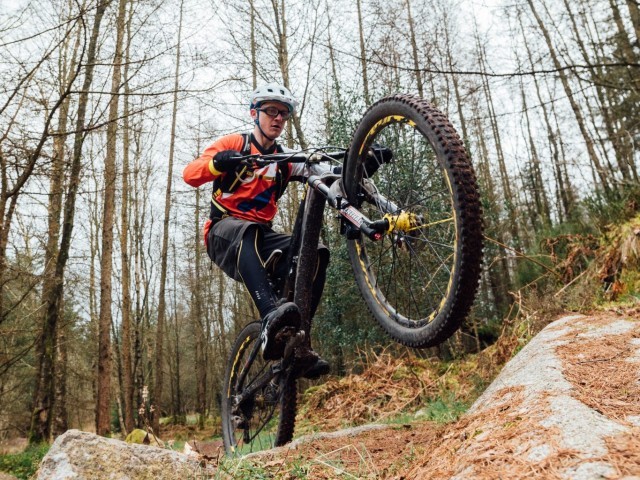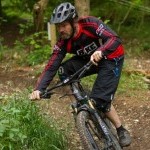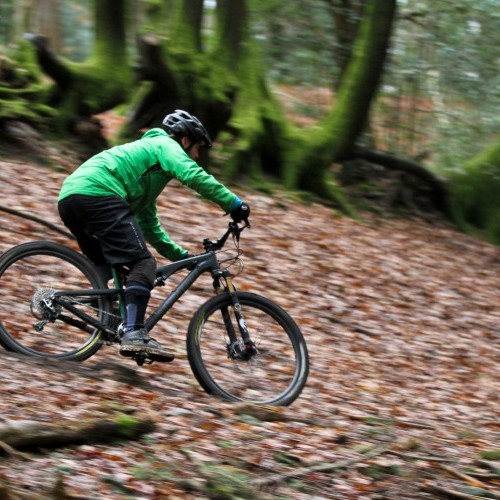
Get a Grip
Technique / Skills
Introduction
If like the ageing rocker Mick Jagger you ‘can’t get no off-road traction’ this issue’s article is for you.
As is de rigeuer with mastering all trail conditions, your kit will play its part but there are a host of other physical and indeed psychological factors that will contribute in being able to ride where others slide, and find grip where the less skilled slip.
Whether it's dealing with camber, turning power into drive on climbs, keeping your wheels under you through corners or effectively controlling your speed on descents, there is much more to traction than soft rubber and a backpack full of hope. Your equipment will play a part in sticking to the trail (and we will of course consider this) but as with a multitude of other trail scenarios you can do a lot more than simply spend your way to success.
Your Equipment
When it comes to kit it’s easy to think only of tyres. Tread pattern, compound and tyre pressure will all make a difference but as well as the bike sticking to the trails it is also worth considering our connection to the bike. The two key contact points here are your hands to the bars and your feet to pedals.
Grips: Your handle bar grips are an obvious and important point of contact. Lock-on grips are far more reliable and less prone to slide off unexpectedly when moisture permeates between them and the bar. A grip that rotates or worse still slides off will seriously upset your levels of control. Fresh grips are one of the simplest and relatively low-cost but often overlooked upgrades to your bike. Worn grips might not seem an issue at the start of a ride when your hands are dry. Add a little moisture from sweating palms or rain and grips that felt tacky at the trailhead can start to be harder to keep hold of than an eel covered in baby oil. The net (pun intended) result will be an ever-tightening grasp on the bars, which will have serious knock on effects to how your bike handles. Death gripping your bars will have a definite and detrimental effect to how you ride and will without doubt contribute to more frequent loss of traction. As your forearms tighten the bike will be less inclined to move freely below you and in the direction you intend. Your bike will be more likely to be squeezed out from between you and the trail, following the path of least resistance instead. A pair of gloves and less worn grips will encourage a lighter touch on the bars, the less tightly you grip, the less the bike will fight back at you.
Pedals: The second and most important points of contact are your pedals. A good set of flat pedals matched with a flat, soft-soled, shoe will create a solid connection. I’m talking about the grip of the shoe being soft here; the sole of course needs to be stiff to ensure good power delivery. Drop your heels slightly and soften your legs and you’ll feel glued to your pedals. Confidence in your feet staying on the pedals will lead to less tension generally as you ride. Rather than riding rigid on your bike, constantly waiting to get bucked off you will find that the bike is freer to move up and down below you. Your bike will be less likely to stall and less likely to slide off following the camber of the trail and more likely to go where you want it to. If you are running clipless pedals keep a check on the wear of the cleats. There is a balance to be struck between the ability to unclip when desired and staying clipped in when you need to. It is worth remembering a great deal of drive and control comes through your feet. If clipless pedals are run too loose some of this control will inevitably be lost. If you are unexpectedly unclipped mid-section there is not much left to balance on and what is available provides little in the way of grip. Clip in with confidence or stick to flats.
Tyres: Of course the tread pattern and compound of your tyres if matched well to the terrain you are riding will dramatically increase the amount of grip available to you. Unless however you have an unlimited budget or are sponsored by a tyre manufacturer you probably are not going to be in a position to change your tyres for every different location and weather condition that you experience. Something that is available to one and all is the choice of how hard of soft you run your tyres. Remember that if too highly pressured the tyres are likely to bounce off the trail regularly rather than morph around rocks and roots as they roll over them. You don’t need a deerstalker and a pipe to work out that if your tyre its getting bounced off the trail surface it wont grip as well. Pinch flats are an obvious problem if you are running tubed tyres at a lower pressure but if you as a rider are less tense, your tyres will not be smashed into every rock or root with such force. When you ride make like it’s Christmas and give a little (or a lot)! You will soon find that you can run a lower tyre pressure than you thought by dissipating more of the trails energy through softened arms and legs. As well as not getting bounced off the trail as much, lower tyre pressure will allow you to create a wider contact area that can be widened further as you push down and through your bike at key times, when braking or cornering for instance. Creating additional traction in this way will serve you well.
With good grips and well planted feet helping to breed confidence in your ability to stay in contact with the bike and your tyres set up to get the most out of them, regardless of their suitability in terms of breadth and tread pattern, the rest is going to be down to you. There are perhaps, four main scenarios when traction is most commonly lost - Technical climbs, controlling speed when descending, cornering and riding camber.
Climbing
On a climb where the trail is smooth and the surface solid, provided the gradient is not too excessive grip is plentiful. As long as you have the power and fitness to keep turning the pedals reaching the top is a given. In the big wide world of mountain biking such parameters are never guaranteed. Many climbs offer much more of a challenge than merely testing your levels of strength and stamina. When the trail is more technical, brute force and traction are not common bedfellows. A loose surface, the odd root or step to negotiate and you will need to do more than just tell your legs to ‘shut up’ and keep mashing away.
In fact it is quite the opposite. Far more important than being able to deliver enormous power through your cranks is channelling what power you have available to you at the right time and in the right way. I may have been called or compared to many animals (pig, dog, monkey, chicken, the male equivalent) but can honestly say it has never been a mountain goat. The only fitness development program I have ever paid attention to is ‘The Biggest Loser,’ and until recently thought VO2 Max was an energy drink, BUT with the right knowledge and technique even I can manage climbs where far fitter fellas falter. The key to maintaining grip is feeling. You need to feel for both the moments when you need to ease off the power and when to increase it, adding the power progressively when the traction allows and easing off when your tyre has reduced contact patch.
As your tyre crests roots or rocks the contact area with the ground is reduced, it is easy at that moment for the traction to diminish rapidly and if you don't ease off the pressure on the pedals your rear wheel is going to spin out. When the trail surface is less firm, leaf covered or gravelly, any stamping of the pedals at the wrong time will disrupt the loose surface below your tyres the same thing will happen. Powering smoothly through as much of the crank turn as possible and feeling what is happening below you will help. Think not of mashing potatoes but more of stirring porridge!
Your body position is also a crucial factor if you want to keep a happy medium between traction on the wheel providing the drive and a planted front wheel. As you power through the crank on a gradient you may well find your front wheel rising. Shuffling forward on the saddle and 'riding the horn' may not be the most comfortable place to position your weight but if maximum comfort is your goal you should perhaps stay at home on the sofa. Sliding forward on the saddle will keep your weight centred as the pitch of the bike steepens under you.
If you find the front wheel rising unexpectedly as you increase the power, this is in part down to the equal and opposite reaction to down force on the pedal. As you power down through the pedal it is easy to end up pulling against the bars. If your front wheel rises from the trail and wanders freely you will soon loose directional control. Dropping your wrists and tucking the elbows in will reduce the amount of up force on the bars created with every down stroke of the pedal. With your chest dropping forwards towards the stem, adopting a hunkered body position, perched on the front part of your saddle you will find a good balance between drive and traction.
Camber: Dealing with a cambered section of trail is a common requirement. The camber of the trail is one area where things always look worse than they are. You will be amazed at the traction that you have and the gradient of slope that can be traversed. With a little extra traction generated from good footwork, body positioning and above all commitment you will be able to stay high and not simply two wheel slide down the fall line. If you are a skier you will be used to traversing steep gradients and there are elements of the dynamics that are common to both riding a bike and skiing. Lean your bike into the slope slightly and drop your down hill pedal. Just as keeping your weight on the down hill ski is the way to create better traction, weighting the downhill pedal will keep your tyres planted in the face of the trail. The bike leans into the slope but you stay over the centreline of the tyres. As ever, looking ahead will promote your body pointing in the right direction. Commitment and confidence play their part. You need to believe that you will hold the line and stay fluid. Holding your breath will not help holding a line!
Corners: If the corner is not bermed and you want to carry speed without losing grip you need to be dynamic in your approach. We have looked at many aspects of cornering in a variety of earlier articles. With particular reference to creating traction and not losing the bike from under you there are several things to work on. Primary is keeping your weight pushing down through the tyres even when leaning the bike over hard. The bike may lean but you should not lean to the same degree. Dropping your outside pedal and weighting it heavily from above will massively increase the amount of grip you can generate. Getting both thighs round the nose of your saddle as the bike leans give you even greater potential for creating down force, dropping your weight for longer and harder, compressing the tyres into the trail surface.
You need to steer with your body to a larger degree not the bars. Commitment plays a massive part in keeping traction as do looking, speed control and identifying entry, section and exit. Looking through the corner early is a given but it will positively contribute to traction by ensuring once your bike is leant over and you are driving it with you mass towards the exit you do not succumb to any visual performance cues. Twitching your bars mid corner, responding to something you see late and want to avoid, will suddenly reduce the effective edge you have created and are relying on. If you don't look down at the trail surface but instead commit to looking through the corner to the exit, you are far less likely to twitch at the bars in a reactive manner.
When your front wheel washes out mid corner it is easy to blame your tyres but in the vast majority of cases the problem is caused by the rider and not tread pattern. In terms of your speed, jabbing your brakes mid-corner will definitely not help in keeping the traction you require. As with any section you should be looking to accelerate from the entry point through the exit. Slower in and faster out, accelerating though a corner you are likely to maintain better traction. Speed control, although a factor in cornering is even more relevant when descending.
Descents
A loss of traction when descending is closely associated with poor speed control, poor emotional control, failing to read the trail ahead or a combination of all three. If your skill and confidence allow you to descend through a given section brake free and accelerating at a rate nature (and your mass) dictate, traction is less of an issue. Maintaining grip when you are attempting to resist the forces of gravity and momentum is more challenging. The sooner you can assess the section ahead the more likely you are to ride it smoothly.
Although you may be looking to control your rate of acceleration you will need to modulate between front and rear brake. There are moments when if you restrict either wheel too much it will pick a path of less resistance and slide off down the fall line. The site of an angled root may trigger a flight-based response of pulling harder on the brakes. This will not help maintain traction. To ensure that your front wheel is not picked up and ends up following the line of a tree root you need to let the wheel accelerate more freely over it.
If your forward momentum is good the front wheel is likely to go in a direction your head, shoulders and hips are pointing. Blip your front brake and restrict your forward momentum and the wheel will be likely to follow the path of least resistance. If the trail surface is loose the more you restrict the wheels the more likely the ground below your tyres is likely to move and this may not be in the direction you intended. Simply locking up your brakes so that wheels skid will result in you having more of a job controlling your direction. The front wheel is the harder of the two to control if locked and a momentary skid can quickly lead to an unplanned separation between bike and rider. Letting it roll more freely as it passes over trail features where it might easily stall will help you maintain the line you chose and the grip to stick to that line.
Yes, you may be accelerating a little faster than desired but look ahead and spot the places where you can moderate your speed in a more controlled manner. Locking the back wheel is perhaps less hazardous but once locked it will follow the fall line of the trail or the path of least resistance. Using your hips controlling and correcting the rear wheels direction is far easier than controlling the front wheel but it is far from ideal to skid your way down every steep section. Added to this, locking the back wheel up doesn't necessarily slow you down. Your bike may well still accelerate and worse still this acceleration may not be in your intended direction.
Keeping your wheels going in the direction you intended may well require letting the bike accelerate faster than you would ideally like. Stay loose, keeping looking ahead and do not freeze. As well as not always slowing you down, a locked rear wheel is likely to bounce up and over things.
These sudden unexpected inputs can lead to tension in the rider, and ultimately be far more unsettling than going a little faster than you had planned. Your rear wheel bucking up and over things can lead to you being kicked to the front of the bike - an instinctual clutch at the brake levers if you are accelerating faster than the bike can easily lead to a short sharp trip over the bars. Ultimately keeping control and traction is as much to do with your mental skills as physical ones.
The Psychology of grip: It is pretty fair to say that achieving and maintaining traction is reliant on you mentally getting a grip (and keeping it). As with so many elements of mountain biking, your flight and fight based responses to threat and danger need to be over ridden. You will need to rely on learned instinct rather than your pre-programmed gut instincts. The solutions to perceived problems on a bike are often counterintuitive. Your gut instinct may well be as inappropriate as taking a 'selfie' at a memorial service. If your bike starts to slide in an unexpected manner gut instinct will have you tensing, gripping harder to the bars and potentially holding your breath.
The harder you grip the bars the more detrimental the effect on your bikes grip to the trail. The common ground shared by both flight and fight instincts is 'freeze'. Freezing and doing nothing is not going to help. Tightening will result in you and your bike becoming a homogenous lump and will expedite and magnify the problem. In the words of wise man Ian Warby, 'Slippery is a state of mind'.
Staying loose and relaxed will allow you to impart more control. Letting the bike move up and down below you will lessen the stalling effect of rocks and roots. Be positive and drive and accelerate the bike in the direction you want it to go. This will challenge your confidence at times. Going faster than planned for a moment may be the best solution. Breathe. Loosen your grip and allow your arms and legs to work to smooth out the trail. Look for the solution rather than focus on the problem. The solution lies ahead of you not down on the ground.
Whatever the conditions, grip is available to you. Sometimes it is harder to find, keep looking, feel for it, stay in emotional control and treat your wheels like the good times...
Let 'em roll!!
This technique article was in Issue 27 of IMB.
Related
By Richard Kelly
Richard Kelly has been riding bikes since forever, and teaching people to become better mountain bikers for over a decade. He’s always out in the Surrey Hills training riders, building trails and riding for himself whenever he gets the chance. His unique perspective on mountain bike technique has earned him fans the world over, with some speculating he is actually Jamiroquai or perhaps Jack Sparrow…








